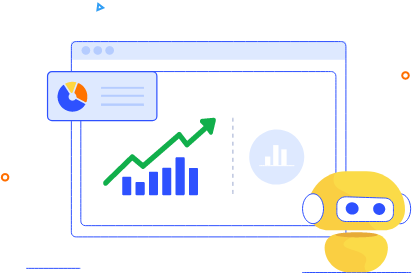S&P BSE Metal Live Chart
O 0
H 0
L 0
S&P BSE Metal Performance
Days Range
S&P BSE Metal Companies
|
Company
|
LTP
|
Change
|
Day Range
|
|
|---|---|---|---|---|
|
APL Apollo Tubes Ltd |
₹1,587.75 |
20.65 (1.32%) |
₹1,562.50 - ₹1,604.10 |
|
|
Coal India Ltd |
₹398.75 |
-0.60 (-0.15%) |
₹388.40 - ₹399.30 |
|
|
Hindalco Industries Ltd |
₹608.90 |
-0.95 (-0.16%) |
₹604.00 - ₹613.50 |
|
|
Hindustan Zinc Ltd |
₹439.95 |
2.10 (0.48%) |
₹430.10 - ₹444.90 |
|
|
Jindal Stainless Ltd |
₹561.55 |
2.90 (0.52%) |
₹555.35 - ₹568.55 |
|
|
Jindal Steel & Power Ltd |
₹882.80 |
28.75 (3.37%) |
₹850.90 - ₹896.25 |
|
|
JSW Steel Ltd |
₹1,007.20 |
-2.20 (-0.22%) |
₹987.00 - ₹1,008.55 |
|
|
National Aluminium Company Ltd |
₹152.95 |
1.70 (1.12%) |
₹150.50 - ₹154.35 |
|
|
NMDC Ltd |
₹65.90 |
0.15 (0.23%) |
₹65.23 - ₹66.26 |
|
|
Steel Authority of India Ltd |
₹113.85 |
-1.55 (-1.34%) |
₹113.05 - ₹115.70 |
|
|
Tata Steel Ltd |
₹137.15 |
0.20 (0.15%) |
₹133.65 - ₹137.90 |
|
|
Vedanta Ltd |
₹400.00 |
1.45 (0.36%) |
₹393.25 - ₹403.65 |
|
S&P BSE Metal Sectors
| Sector Name | Advances | No Change | Declined |
|---|---|---|---|
| Mining & Mineral products | 2 | 3 | 1 |
| Non Ferrous Metals | 2 | 3 | 1 |
| Steel | 4 | 6 | 2 |
What is S&P BSE Metal?
The metal industry contributes over 2% to the GDP of India and provides employment to over 25 lakh people. Metal is one of the most important industries for the Indian economy as it forms a base for the country’s infrastructure. From the vehicles we drive to the utensils we cook in, metal is used for a wide variety of purposes.
S&P BSE metals index has been designed to track the companies that are involved in the mining and extraction of metals. It involves the extraction of heavy metals as well as precious metals. The metals extracted are then sold to other industries to produce other products. The price of these metals has a huge impact on the products we use in our everyday lives, as these metals act as raw materials for many industries.
The BSE metals index includes the companies that have been classified as metals sector by the BSE according to its classification system. The price movement of the stocks influences the S&P BSE metals share price. The constituents of this index are selected from among the constituents of BSE 500. The index is designed to track the performance of the companies belonging to the metals, metal products, and mining sectors.
The S&P BSE metals was launched on August 23, 2004, and the year 1999 was taken as the base year for calculating the float-adjusted market cap and the index value. The index price is calculated in real-time and gets affected by the change in the price of its constituent stocks.
The index consists of 10 stocks as of now and all these stocks together have an average market cap of INR 642,696.8 million. In order to present the correct value, the index is reviewed twice annually, both in June and December. Earlier, the full capitalisation method was used to calculate the index value, where the full market cap of the stocks was considered. In 2003, it was changed to the float-adjusted market capitalisation method, which uses only the shares available for trading while calculating the value of the BSE metals index.
How are S&P BSE Metals Calculated?
The float-adjusted market capitalisation is calculated by multiplying the total number of shares with the market price of the share. The value derived is then multiplied by the free float factor to calculate the float-adjusted market capitalisation of BSE metals.
Let’s illustrate the calculation with an example –
Company T has 1 lakh shares on the stock exchange. Out of these, only 75% are exchange-traded. The market price of the stock is INR 1000. Then, it will be calculated as follows –
| Total Shares in Market for Company T | A | 1 lakhs |
| Market Price per share of Company T | B | INR 1000 |
| Total Market capitalisation | C = A*B | INR 10 Crores |
| Free-float factor (75%) | D | 0.75 |
| Free-Float Market capitalisation | E = C*D | INR 7.5Crores |
The float-adjusted market capitalisation calculated in the last step for all the companies is added, and the total derived thereof is divided by the market cap in the base year and multiplied with 100 to find the BSE metal index price.
| BSE Metal Share Price Today = Total Free-Float Market capitalisation x 100 / Base Market capitalisation (1999) |
How are Stocks Selected for Inclusion
Given below are the conditions that every stock needs to meet to be included in the BSE metals index.
- All the stocks should be included in the BSE 500 index.
- The float-adjusted market cap of the last 3 months is calculated, and its average is taken for tanking purposes.
- The stock should have a minimum of 90% trading days in the last three months from the reference date.
S&P BSE Metal FAQs
BSE metal stocks include the companies that have been classified by BSE as a part of the metals, mining, and metal products sector. It includes all those companies that are involved in the extraction and mining of metals in the country.
How to invest in S&P BSE Metal?
You can invest in the BSE metals index in the following ways –
- One way is to invest in the constituent stocks individually. You can invest in the stocks of your choice or in all 10 of them.
- Another way is to purchase the units of a mutual fund that invests in metal sector stocks.
Buying a mutual fund will help you diversify your investments. Moreover, you will require less capital.
What is the objective of S&P BSE Metal?
The purpose of BSE metals is to track the growth and performance of companies belonging to the metal sector. The BSE metals index tracks the share price of the metal companies with the highest market cap.
Is investment in S&P BSE Metal safe?
If you invest in all the 10 metal stocks that are a part of the BSE metal index, you can reduce your investment risk significantly. Investing in a variety of stocks will provide you with the benefit of diversification.









